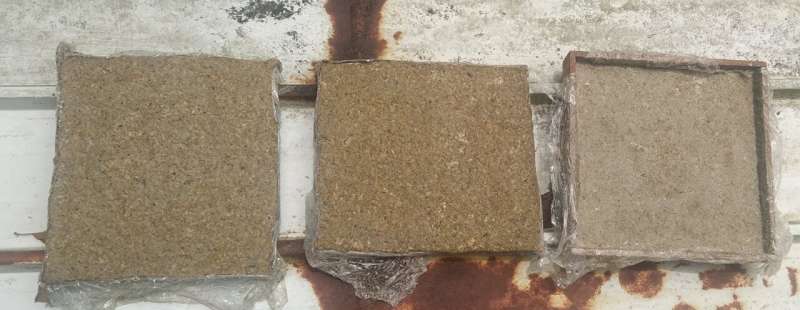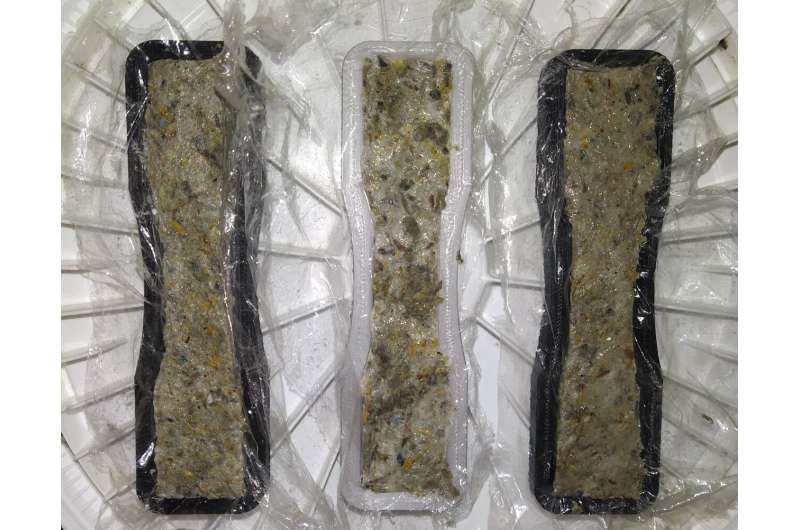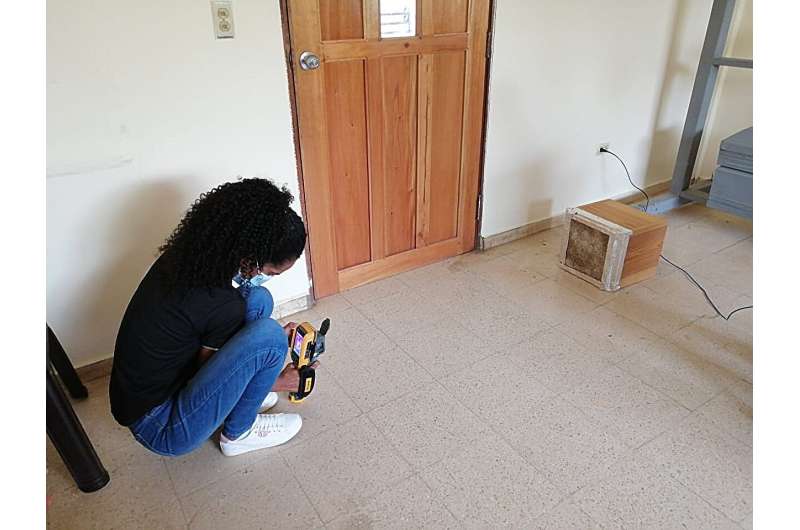This article has been reviewed according to Science X's editorial process and policies. Editors have highlighted the following attributes while ensuring the content's credibility:
fact-checked
trusted source
proofread
Rice husk and recycled newspaper may be the eco-friendly insulation material of the future

The building sector is the second largest sector in plastic consumption, and is responsible for more than a third of energy-related greenhouse gas emissions worldwide. Manufacturing processes of construction materials pollute air, land, and water. Accordingly, construction materials made from agro-industrial waste become increasingly attractive due to their lower environmental impact.
To contribute to a new generation of materials made from what is often considered waste, researchers in Panama have now developed a rice husk-based insulation material and evaluated its thermal and mechanical properties. They have published their results in Frontiers in Built Environment.
"Here we show that is possible to create alternative insulating material from recycled newspaper and rice husk," said Dr. Nacarí Marín Calvo, a researcher at the Universidad Tecnológica de Panamá, Centro Regional de Azuero and first author of the article. "The developed material has competitive thermal conductivity compared to many natural and recycled insulation materials."
A four-ingredient recipe
In rural Panama, where the study was conducted, rice husk is considered agricultural waste, normally disposed of in landfills or incinerated, which makes it a significant environmental concern. To produce the mix, the husks were shredded. Then cellulose, obtained from recycled and shredded newspaper, was added, followed by borax, which made the mix resistant to fungi and gave it fire-retardant properties. All components were bonded with glue.
The researchers tested different material compositions to verify the behavior of the material when more or less rice husk was used. The first mix was made from 14% newspaper, 9% rice husk, 15% borax, and 62% glue. In the other two compositions, the amount of rice husk was increased, while the amount of newspaper was decreased. The amounts of borax and glue remained unchanged. "We found that the results were similar in all three compositions in k-values, maximum stresses, and compressive strength values," said Marín Calvo.

Head-to-head with other natural materials
Thermal conductivity, also often called k-value, describes the ability of a material to conduct heat. A lower value means the material is more suited for insulation. For the tested compositions, the k-value ranged between 0.0409-0.04607 watts per meter Kelvin (W/mK). Other natural and recycled insulation materials have k-values ranging from 0.027 to 0.1 W/ m/K.
Tensile strength is the maximum stress that a material can withstand while being stretched or pulled before breaking. Testing showed that maximum stress in average tension ranged from 1.31 to 1.76 megapascals (MPa) for the three compositions. Pascal is the unit used to measure the force applied in a 90° angle on the surface of an object. Materials based on cardboard, cement, and sand have similar tensile strength values.
The compressive strength values obtained were between 20.19 and 21.23 MPa. Compressive strength describes a material's ability to withstand being pushed together. The obtained values allowed the researchers to verify the possibility of using the developed material in construction applications.

Beyond building
The researchers pointed out that in the future, more studies would be needed to confirm the material's insulating properties, and how it handles climates different to the high humidity of Panama. "As a part of future research, we are evaluating the degradation of the developed material under ambient controlled conditions," Marín Calvo said.
Further research could also include other configurations, such as the addition of long fibers pointing in one direction to reinforce the behavior of the material in tension. "We can conclude that the material could also potentially be used in various engineering domains, including the production of lightweight components, construction panels, and sustainable packaging," Marín Calvo concluded.
More information: Thermal insulation material produced from recycled materials for building applications: Cellulose and rice husk-based material, Frontiers in Built Environment (2023). DOI: 10.3389/fbuil.2023.1271317















